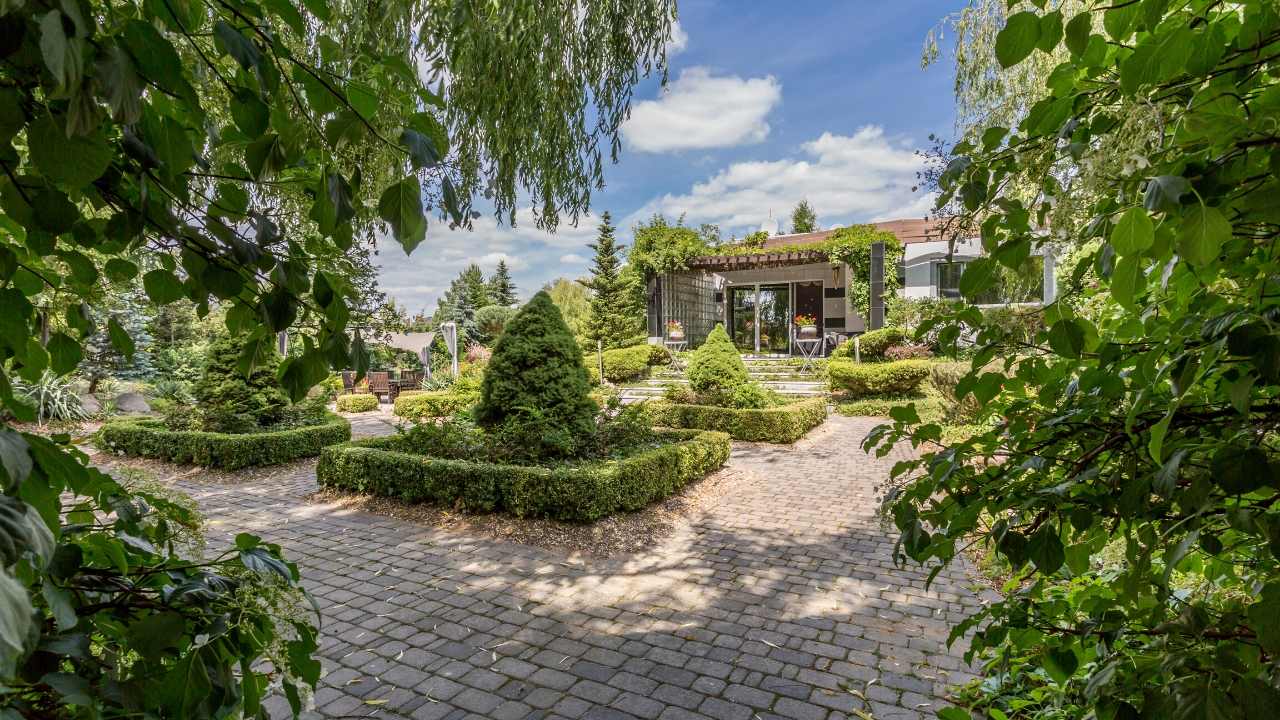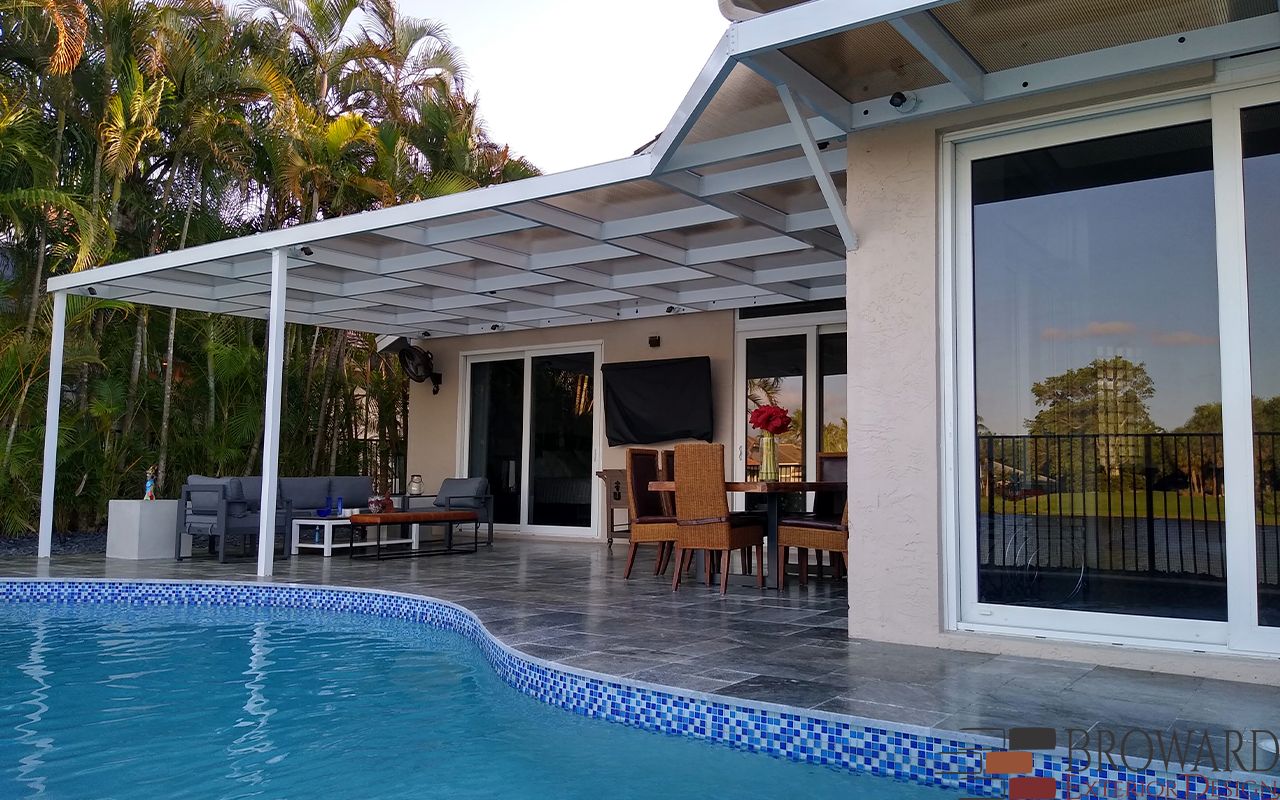
For those with limited space, you can find patio designs for small spaces that don't compromise the look of your home. You can turn even a small space into an oasis. A patio is the perfect escape for those who live in a city or suburb. Not only is it a great place to spend time outdoors and enjoy the fresh air, but it's also an excellent way to entertain family and friends. For those with limited space, you can use a mobile bar cart to easily access your drinks.
To make the most of your outdoor space, consider placing the patio dining table away from the rest of the furnishings. It is possible to place a few patio furniture pieces in a small space and still allow guests to move between them. By using narrow outdoor seating, you can elongate the space and provide a comfortable spot for your guests to relax. You can also use side tables or ottomans to entertain guests.

The color scheme of your interior and patio design are closely linked. You don't want to clash with the outside world. Your patio should be as cohesive as the rest your home. You'll be able maximize the visual space in your outdoor space and make it feel bigger than the rest of the home by seperating the living and eating areas.
If your space is limited, it may be a concern about how you design it. You can mix and match different styles to create a more casual look. It may surprise you to discover how many styles compliment each other. By mixing and matching styles, you can get the effect you want without wasting space. To achieve the look you desire, you can mix and match different materials and furniture pieces.
Some patio designs for small spaces require a privacy screen. A patio screen helps to separate the space and adds a decorative touch. There are many options, both DIY and store-bought. The best option will depend on the garden and your budget. You have two options: a garden fence or taller hedges to create privacy. For a more natural atmosphere, outdoor curtains can also be used. You can pull the drapes closed to keep your space cool and give you privacy when it is needed.

You can either add a fireplace to the space or build a simple wall of stone depending on how big it is. You could also make a small terrace with built in seating and benches. You can use it as a reading spot or a dining area, with a fireplace. Maximizing the space on your patio will maximize its potential benefits. Enjoy the outdoors with style. It's the perfect place to unwind!
FAQ
How can you remodel a house without spending any money?
When renovating a home without spending money, the following steps should be followed:
-
You should create a budget plan
-
Find out the materials you require
-
Decide where you want to put them
-
Make a list.
-
Determine how much money you have
-
Plan your renovation project
-
Start working on your plan
-
Do some research online
-
Ask family and friends for their help
-
Get creative
How much does it take to renovate a home?
Renovations cost typically $5,000 to $50,000. Renovations typically cost homeowners between $10,000 and $20,000
Can I rent a dumpster?
Yes, you can rent a dumpster to help you dispose of debris after completing your home renovation. Renting a dumpster will help you keep your yard clear of debris and trash.
What should I fix first when renovating a house?
You must first clear out the clutter outside and inside your home. Next, clean out any moldy areas. Final steps include cleaning up exterior surfaces and applying new paint.
Can you live in your house while it's being renovated?
Yes, you can live in your house while you renovate it.
Can you live in a house and have renovations ongoing? It depends on the length of the construction. If the renovation process lasts less than 2 months, then yes, you can live in your home while it's under construction. However, if the renovation project lasts longer than two months, then no, you cannot live in your home while the renovation is taking place.
There are many reasons why you should not live at home during major construction projects. You might be hurt or even die from falling objects on the site. You could also suffer from noise pollution and dust caused by the heavy machinery used on the job site.
This is especially true for multi-story houses. In such cases, vibrations and noises from construction workers may cause irreparable damage to your property.
As we mentioned, temporary housing will be necessary while your home is being renovated. This means that your home won't provide all the amenities you need.
For example, you will not be able to use your washing machine and dryer while they are undergoing repair. You will also have to put up with the smell of paint fumes and other chemicals as well as the loud banging sounds made by the workers.
All of these factors can create stress and anxiety for you and your loved ones. You should plan ahead to avoid feeling overwhelmed by this situation.
When you decide to start renovating your home, it is best to do some research first so that you can avoid making costly mistakes along the way.
Also, it is a good idea to get professional help from a reputable contractor in order for everything to go smoothly.
What Does it Cost to Renovate Your House?
Cost of renovations depends on the material used, how large the job is and how complex it is. Certain materials, such as wood, require special tools like drills and saws. Others like steel don't. The cost of renovations will vary depending on whether your contractor does all the work or you do it yourself.
The average home improvement project cost is between $1,000 and $10,000. The total cost for a home renovation project would be $5,000 to $25,000 if you hire professionals. You could also spend as much as $100,000 if you do it all yourself.
You should know that there are many factors which determine the final cost of renovation. These include the material used (e.g. These factors include whether brick is concrete or brick, how large the project is, how many workers are involved, the duration of the project and so on. When estimating the total cost for renovation, it is important to keep these factors in your mind.
Do I have to renovate my entire house?
If you can do it yourself, why pay someone else when you could save money and time?
You may love DIY but there will come a time when you can't do it all by yourself. You may not be able to control all the variables.
An example: If your house is older than you think, it might be that the wiring is unsafe. You will need an electrician to inspect and make sure that your system is reliable and safe.
It is possible that your renovations might cause structural damage.
It is possible that you don't have the right tools or the knowledge to do the job correctly. A plumber's snake is an instrument that can be used to unclog pipes.
Plumbing codes also require that you have a licensed plumber work on your project.
You must be confident in your abilities before you attempt such a difficult task.
If you are unsure whether you can tackle the job yourself, ask for help from friends and family members who have done similar projects before.
They can offer advice about what to do and where to go for more information.
Statistics
- The average fixed rate for a home-equity loan was recently 5.27%, and the average variable rate for a HELOC was 5.49%, according to Bankrate.com. (kiplinger.com)
- A final payment of, say, 5% to 10% will be due when the space is livable and usable (your contract probably will say "substantial completion"). (kiplinger.com)
- Design-builders may ask for a down payment of up to 25% or 33% of the job cost, says the NARI. (kiplinger.com)
- Most lenders will lend you up to 75% or 80% of the appraised value of your home, but some will go higher. (kiplinger.com)
- They'll usually lend up to 90% of your home's "as-completed" value, but no more than $424,100 in most locales or $636,150 in high-cost areas. (kiplinger.com)
External Links
How To
Do you want to renovate your interior or exterior first.
Which one should I first do?
There are many factors you need to consider when choosing which project you want to work on. The most common factor when choosing a project is whether it is old or newly built. You should consider the condition and age of the roof, windows, doors, flooring, electric system, etc. When the building is new, there are many things to consider such as its location, size, number, style, and so forth.
If the building has an older roof, it is worth looking at the roof first. You might consider starting the renovation immediately if the roof appears to be in danger. If the roof is fine, then you can move onto the next step. Next, inspect the windows. The windows should be inspected for damage or dirt before you do anything else. After that, you can go through all the doors to make sure they are clear of any debris. Once everything is clean, you can then begin to put the floors together. Be sure to ensure that the flooring is stable and strong so that you can walk on it without slipping. Now you can start to add the walls. You can now examine the walls to check for cracks or damage. If the wall is intact, then you can move to the next step. Once the walls have been checked, you can begin to work on the ceiling. It is important to inspect the ceiling and ensure it is strong enough for any weight you may place on it. If all is well, then you are ready to move on to the next phase of your renovation.
If the building was newly built, you'd probably start with its exterior. Examine the exterior of the house. Is the house well-maintained? Are there cracks or holes? Does the exterior look great? If it doesn't look good, you need to fix it. You don't want your home to look poor. Next, examine the foundation. The foundation should be inspected for weakness and repaired. Also, check the driveway. You want it to be smooth and flat. If it isn’t then it is time to repair it. You should also inspect the sidewalk while you're checking your driveway. You should replace the sidewalk if it's uneven.
Once you have completed these inspections, you can now move on inside the house. The kitchen is the first thing you should inspect. Is it clean and well-maintained? If it is unorganized, it should be cleaned. Next, you should inspect the appliances. You want them to be in good order and working correctly. If they aren’t in great shape, then either you buy new ones or replace them. The cabinets should be inspected after that. You should paint them if they are damaged or stained. If they're in good condition, you can move on to the bathrooms. Check the toilet in here. If it leaks then it's time to replace it. You can wash it if it is just dirty. Next, examine all the fixtures. Make sure they're clean. You should clean them if they are stained. You should also inspect the countertops. If the countertops are cracked or chipped, you might want to repaint them. Sealant should be used if the surfaces are smooth and shiny.
The last step is to check the furniture. Make sure that none of it is missing or broken. If you find something missing, it's best to fix it. It is best to repair any broken items. Once everything is checked, then you can move back outside and finish the job.